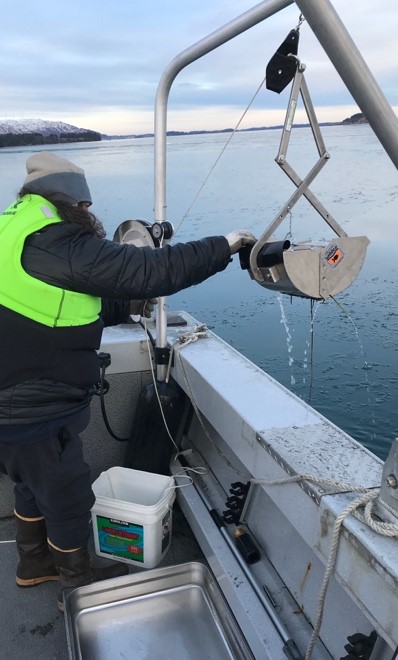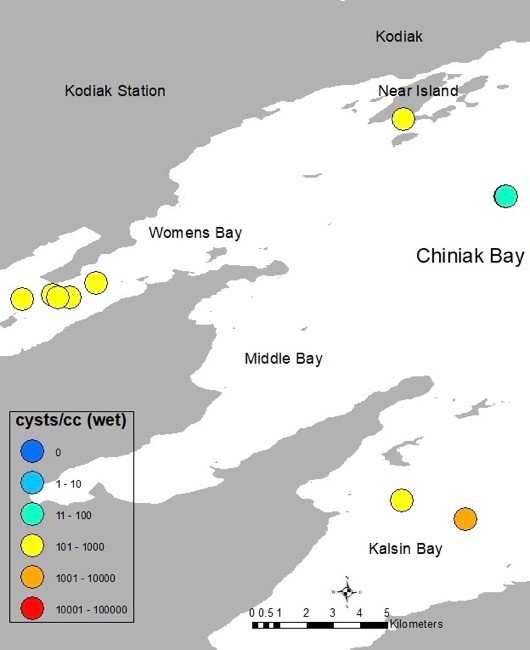
NCCOS funded partners recently completed field work in Kodiak Alaska to continue advancing a coordinated, multi-region MERHAB research project. This work is helping to establish a capacity for cyst enumeration that will enable researchers to identify where future Alexandrium catenella blooms may occur and support efforts to develop better harmful algal bloom monitoring and forecasting in Alaskan coastal waters.
The University of Alaska Fairbanks (UAF) Kodiak Seafood and Marine Science Center led efforts to collect sediment from several locations around Chiniak Bay in December 2020. Samples were grabbed from the top three centimeters of bay bottom sediment using the UAF research skiff outfitted with an electric line hauler and Ponar grab sampler. The sediment samples will be analyzed and added to earlier sampling results (Figure 1) to improve maps of cyst abundance in the region.
Samples collected from Alaska and other study regions are advancing the primary objective of the MERHAB project to develop and test new quantitative molecular methods, quantitative polymerase chain reaction (qPCR), and fluorescent in situ hybridization (FISH), which promise faster and less costly results than the current microscopy-based method.

This research supports NOAA efforts to improve forecast products for toxic Alexandrium blooms in the Gulf of Maine and expand this knowledge to help mitigate Paralytic Shellfish Poisoning risks in Puget Sound and Alaska.
A poster (Figure 2) describing the project and progress of the MERHAB team was presented at the January 2021 Alaska Marine Science Symposium by Julie Matweyou.

